I had to drive across town for my appointments with the high-risk obstetrician. I had been referred to him by my normal-risk obstetrician due to my age (thirty-six the first time, and now again at thirty-nine) and my two previous miscarriages.
The waiting room was never crowded. It was dimly lit, with photographs of babies and children plastered across one wall.
Today, as at every visit, I studied the photos fiercely while waiting for my name to be called. The answer to a successful pregnancy could surely be gleaned from their smiles, poses and matching outfits.
I knew just what to do if any of those smiling babies or kids became sick or got injured. After all, as a pediatric hospitalist I spent my days ministering to the needs of hospitalized children. But I had no idea how to manage a pregnancy, a fetus or a ridiculously anxious pregnant physician who wasn’t getting any younger.
The office, I’d quickly learned, had a good ultrasonographer and a bad one. The Good One had a smooth voice that washed over my swollen belly and jangling nerves. She was gentle and kind. She showed me how my baby’s hairs swayed back and forth in the amniotic bath. She printed extra three-dimensional images of that precious fetus face melting into the grainy black-and-white frames like a wax figurine subjected to 98.6 degrees of maternal love.
The Bad One was tense and stern—and today was no exception. As usual, she jabbed at my belly with her probe and became visibly angry when my baby didn’t cooperate with the requisite poses. She muttered her frustrations as my heart rate ticked up. We went round and round like this as the fetus hid in the recesses of my uterus. I lay rigid on that exam table, near tears, my naked belly jutting toward the ceiling and my heartbeat yammering away.
Eventually, the Bad One deemed the images of my fetus “good enough” (though I knew she hated us and found us inadequate) and left me alone in the dark womb-room. By the end of my pregnancy, I would feel brave enough to offer the office manager some feedback about the Bad One. But now, lying exposed and at the mercy of her probe, I felt inadequate and ashamed. She sent a very clear message that my baby and I had done something wrong.
Swiping at the juicy corners of my eyes before they overflowed, I could sense the remnants of ultrasound goo in my belly button and in the crease of my pelvis, but I tried to ignore it. I knew there was more to come.
Dr. Bailey breezed into the dark cave in his crisp button-down shirt and stylish glasses. He grabbed the ketchup bottle of goo and claimed his rightful spot on the stool/throne of medical expertise. Wheeling himself up to the exam table, he crooned an eloquent stream of reassurance, squirting more lubricant onto the taut skin of my abdomen.
I wanted to let myself be utterly, thoroughly reassured by Dr. Bailey. I truly did trust him, but I know all too well how often physicians play the odds. I also know that there are no absolutes in medicine.
Also, I couldn’t squash down a brand-new fear that was infiltrating every fissure and crevice of my brain: The Bad One had measured my baby’s femur length at the first percentile—a possible sign of congenital dwarfism.
“Does the baby have achondroplasia?” I blurted out. “I saw the numbers on the screen.”
His slow smile was, to my relief, reassuring without being condescending.
“Achondroplasia? No, no…those numbers are not very accurate,” he said, soothing my anxiety without making me feel foolish or ashamed for asking. “Everything’s looking good here; I don’t think you have anything to worry about.”
During that moment in the dark ultrasound cavern, I was able to believe him.
Dr. Bailey wiped some of the goo off my belly with a worn white washcloth snatched from the stack of similar cloths. He flashed his kind, reassuring smile, and then he was gone.
Although I grew to adore this man over subsequent visits, my overall experience at his office was draining. I craved the knowledge the ultrasounds provided, but felt spent and violated afterward. There was always some sticky residue left behind; it was as if the ultrasound probe had ejaculated on my abdomen, then left me alone in the dark, scrambling to collect my heap of discarded clothing.
Once I was decent again, dressed in my dowdy maternity apparel, I emerged into the bright light of the hallway. After lying in the dark for nearly an hour, riding a roller coaster of fear, shame, guilt and relief, I just wanted to bolt out of there as quickly as possible. But I had to wait for the goddamned after-visit summary (AVS) to be printed out and thrust at me.
Oh, good! Next to my rapidly increasing weight and borderline high blood pressure, I saw the list of my diagnoses, topped off by my favorite: “Elderly multigravida.” I had first been labeled as such when I was a thirty-six-year-old, pregnant for the fourth time, and again as a thirty-nine-year-old, during this fifth pregnancy. How could I possibly become a new mother in my elderly state?
I rolled the stapled pages into a cylinder, nodded curtly at the nurse who’d forced them upon me, then rushed past the wall of smiling photos, each one seeming to promise that this would all be worth it in the end.
Postscript:
Molly Frances was born at thirty-nine weeks’ gestation by induced vaginal delivery. She and I both sailed through labor and delivery, the postpartum hospital stay and my maternity leave. The terrifying postpartum anxiety that had plagued me during my second child’s infancy was blissfully absent. Molly is now ten years old and inspires me constantly. It is hard to believe that I am the mother of such an incredibly cool human.

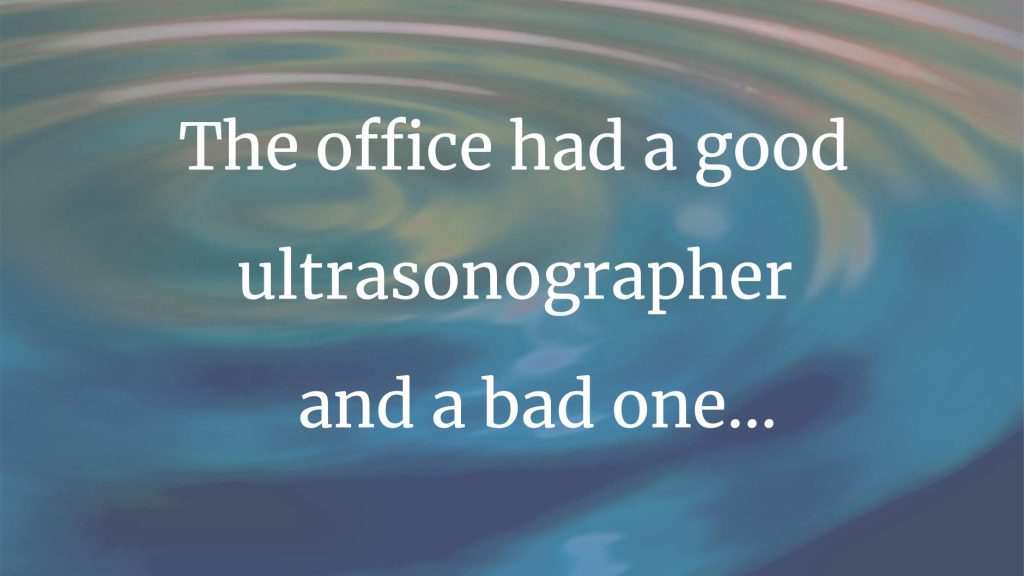
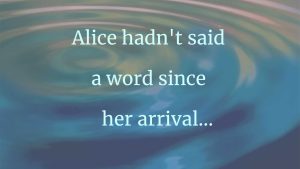
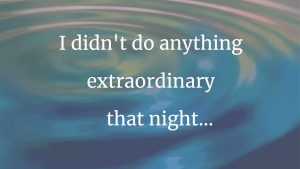
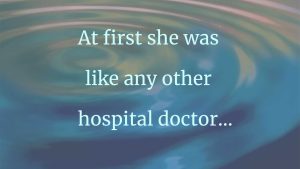
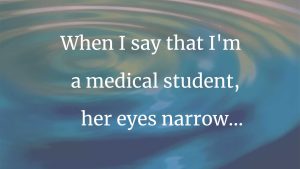
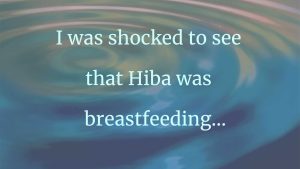
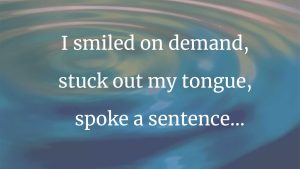
7 thoughts on “Elderly Multigravida”
I love a story with a happy ending. Cherish Molly and your entire family. And be well!
What a lovely essay! The imagery of the defiling goo was especially powerful. As a physician who had children in her 30s (and earned an MFA in my 50s) I say WRITE ON. You are doing good work.
So many factors contributing to your degrading experience! I am so sorry you had to go through that! I hope you did discuss that “bad” technician with the office manager. I don’t believe these thoughtless individuals realize how their actions impact us for a lifetime while they forget us when they go home at night. I’m so glad you have a beautiful daughter, but I do wish we had a way to open the eyes of such apathetic and hurtful caregivers.
Dear “Elderly Multigravida”,
Beautiful writing. Thank you, Lisa. I am sorry your ultrasound experience was so heartless. If anyone should be treated with great respect, it is a mother carrying a child. Thank you for your fierce and honest writing by calling it what it was. I hope you will consider the wisdom that comes with now being an “elder.” I am so glad you are pursuing your MFA. Keep publishing. The world needs your voice.
Sincerely,
Elder Nurse Pamela
Dr. Sieczkowski, your essay was very well written; I know that because I found myself getting anxious as you described your ultrasound procedure so vividly. I think many of us find ourselves in an uncomfortable position because of what we do and what we know; that’s part of the deal, given our profession. Having said that, I was greatly relieved when you provided that postscript and let us know that Molly Frances is doing just fine…
As a pediatric hospitalist who is also facing the prospect of having child #1 in my late thirties, I deeply appreciated this post. Thank you so much for sharing and helping the rest of us who are traveling this road to not feel alone!
A great story about a very stressful time. I like that “elderly” terminology. I became an adoptive dad at 48, wife was 39.